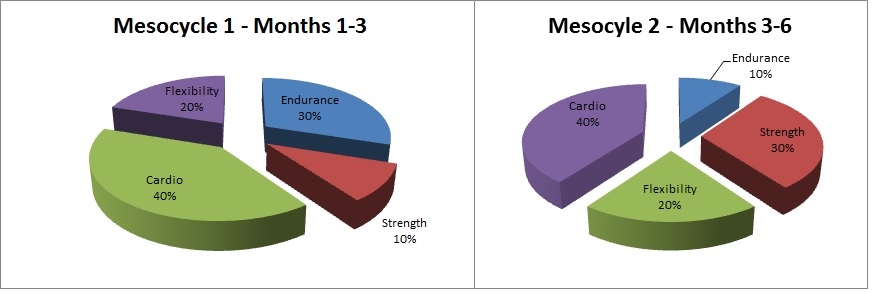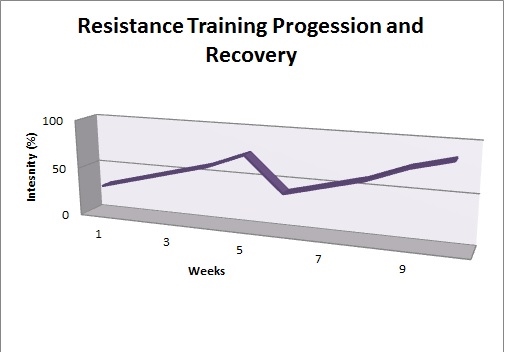Introduction
Cancer survivors commonly display several physiological de-conditioning effects following cancer treatment. It is common that survivors will show a decrease in muscle mass and an increase in fat mass, this leads to an overall decrease in muscle strength and endurance. There is also aerobic de-conditioning that leads to shortness of breath, decreased ability to perform everyday tasks and increased risk for cardiovascular disease.
Our task is to design a training program for a sedentary cancer survivor to reverse negative physiological effects caused by cancer treatment. In our training program, we aim to increase muscular strength, mass and endurance through a resistance program; and to increase aerobic/cardiovascular fitness and also to increase flexibility of muscles. By targeting these aspects of fitness for our client, we can increase their quality of life and decrease risk of developing other health complications as well as decrease cancer recurrence.
Initial Fitness Assessment see Fitness Assessments for explanation on basic processes and average values
Summary of Results for 28 year old, sedentary Female Cancer Survivor:
Body Composition = Fair
Aerobic Capacity = Needs Improvement
Back Health Composite = Fair
Musculoskeletal Health = Fair
Overall Health Score = Fair
see full assessment report
Training Goals
Long Term ~ 6 months
• Increase overall health score from fair to very good
• Increase aerobic capacity from needs improvement to good
• Increase musculoskeletal health from fair to good
• Decrease resting blood pressure to acceptable value of 115-130/75-85
Short Term ~ 3 months
• Engage in cardiovascular exercise at least 3 days a week (800kcals to burn)
• Improve muscle strength and endurance
• Engage in daily flexibility exercises
Mesocycle Training Distribution


Resistance Training see F.I.T.T for resistance exercise recommendation
The goal with resistance training is to increase muscle strength and endurance. Below is a graphical representation of how intensity of workout is increased for the duration of the our fitness program. As this program is focused on rehabilitating cancer patients and increasing quality of life for survivors, the focus of workouts target large muscle groups and consist of full body training each session. Cancer treatment caused muscle degeneration in most patients and increased fat mass, by implementing a full body resistance training that targets muscle endurance and some muscle strength for the first mesocycle, we can allow for gradual muscle gains while avoiding too much muscle strain which can result in increased fatigue levels for cancer patients and survivors.

Mesocycle 1 (Months 1-3)
Weeks 1-4 Intensity 30-40% 1-RM 3 sets: 15-20 reps
Weeks 4-8 Intensity 50-60% 1-RM 3 sets: 10-15 reps
Weeks 8-12 Intensity 60-75% 1-RM 2 sets: 8-10 reps
Mesocycle 2 (Months 4-6)
Weeks 1-4 Intensity 40-50% 1-RM 3 sets: 10-15 reps
Weeks 4-8 Intensity 60-75% 1-RM 3 sets: 8-10 reps
Weeks 8-12 Intensity 75-85% 1-RM 2 sets: 8-12 reps
SAMPLE RESISTANCE TRAINING WORKOUT
Cardiovascular Training see F.I.T.T for cardiovascular exercise recommendation
The goal with cardiovascular training or aerobics is lower blood pressure and increase aerobic capacity. Starting the program as a beginner, the standard rule is aim for an intensity of 35-65% of HRmax each exercise or 500-1000 kcals per week. Progression for cardiovascular training should be seen within the first month of exercise if the plan for 3 sessions a week consisting of 30-60 mins of exercise is completed. Microcycle for this program are 4 week periods to allow for cancer patient to fully adapt to new training method before increasing intensity. This is due to treatment effects, if patient underwent radiation therapy we must restore cells that may have been damaged. Commonly the cardiovascular system is affects and undergoes degenerative effects, by allowing for full adaptation of cardio intensity before increasing the intensity we allow for best benefits to be seen.

Mesocycle 1 (Months 1-3)
Weeks 1-4 Intensity: 40-69% HRmax Light-moderate
Weeks 4-8 Intensity: 55-69% HRmax Moderate
Weeks 8-12 Intensity: 60-75% HRmax Moderate-hard
Mesocycle 2 (Months 4-6)
Weeks 1-4 Intensity: 65-70% HRmax Moderate
Weeks 4-8 Intensity: 70-75% HRmax Moderate-hard
Weeks 8-12 Intensity: 75-80% HRmax Hard
SAMPLE CARDIOVASCULAR TRAINING WORKOUT
Flexibility Training see F.I.T.T for flexibility exercise recommendation
The goal with flexibility is maintain overall joint movement. Our flexibility program should be done every day for at least 30 mins following resistance or cardiovascular training. Intensity of each stretch should be just below pain threshold, muscle stretch should feel tight and uncomfortable but not painful.

Mesocycle 1 (Months 1-3)
Weeks 1-4 Stretch Duration: 10 seconds Reps: 2
Weeks 3-8 Stretch Duration: 15 seconds Reps: 3
Weeks 8-12 Stretch Duration: 20 seconds Reps: 4
Mesocycle 1 (Months 4-6)
Weeks 1-4 Stretch Duration: 15 seconds Reps: 2
Weeks 3-8 Stretch Duration: 20 seconds Reps: 3
Weeks 8-12 Stretch Duration: 30 seconds Reps: 4
SAMPLE FLEXIBILITY WORKOUT
Final Fitness Assessment
Upon completion of Metastasize Your Health’s fitness program for cancer patients and survivors, our 28 yr female client showed improvements in assessments and self reported health status. With the combination of resistance training, cardiovascular training and flexibility training our client had met final long term goals. Final overall fitness health received was very good.
Interested in a fitness program similar to this but specialized for your individual needs? Contact us today or see Services to see what else we offer at Metastasize Your Health
References
(1)Jones, G. (2013) HMKN 311 Exercise Prescription Lab Manual, Lab 3 University of British Columbia Okanagan
(2)Lippincott Williams & Wilkins (2010) ACSM’s Resources for the Personal Trainer (3rd Edition)





